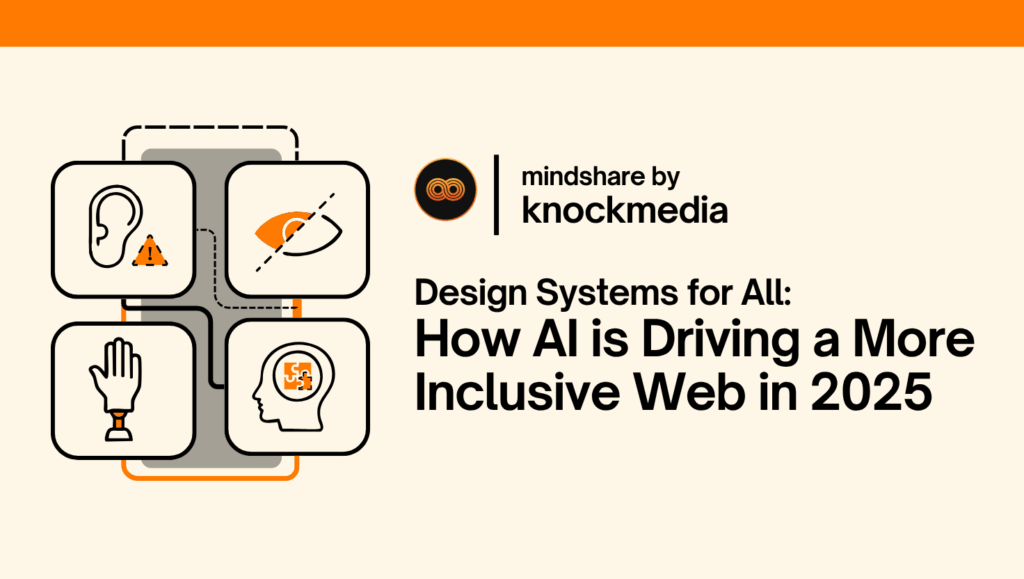
In 2025, digital accessibility is no longer just a checkbox for designers and developers, it’s becoming a core part of how companies create meaningful user experiences. As technology advances and legal frameworks tighten, businesses must rethink how they make websites, apps, and digital services accessible to everyone.
What is Web Accessibility?
Web accessibility means designing websites and apps so everyone, including people with disabilities, can use them easily. It ensures that content is perceivable, understandable, navigable, and usable by people with visual, hearing, motor, or cognitive challenges.
How Does It Help Everyone?
Accessible design benefits all users by making websites simpler to navigate, easier to read, and more user-friendly on any device. It improves the experience for people of all ages, abilities, and situations, like those with temporary injuries, older adults, or anyone using a mobile device on the go.
Growing Importance of Accessibility Compliance
In recent years, there has been increased attention on making websites accessible to all users, including those with disabilities. In the U.S., the Americans with Disabilities Act (ADA) is now more widely recognized as applying to digital spaces, encouraging businesses to ensure their online presence is inclusive. Updated guidelines like WCAG 2.2 provide clearer standards to help companies meet these goals.
A notable example is Domino’s Pizza, which faced legal challenges over their website’s accessibility that reached the U.S. Supreme Court in 2021. This case highlighted the importance of digital accessibility and motivated many organizations to prioritize inclusive design. (Source: CNN)
AI Steps In
Artificial intelligence is revolutionizing how accessibility is implemented. Tools like Microsoft’s AI-powered accessibility features help automate image descriptions, provide real-time captions, and even offer voice navigation.
For instance, Facebook’s automatic alt text uses AI to describe images to visually impaired users, dramatically improving social media accessibility.
Beyond Physical Disabilities: Inclusive Design for Everyone
Accessibility is expanding beyond traditional physical disabilities to embrace cognitive and neurological diversity. Netflix has started offering multiple subtitle options, including ones designed for viewers with cognitive disabilities or autism. This approach makes content more inclusive and helps viewers tailor their experience to their needs. (Source: Netflix Tech Blog)
Voice and Gesture Controls Gain Traction
With smart assistants like Alexa, Siri, and Google Assistant becoming household staples, voice interfaces have surged in importance. Designers now must ensure their products work seamlessly with voice commands and gesture controls, opening new doors for users with limited mobility.
Amazon’s Alexa Skills Kit helps developers create voice-first applications that improve accessibility for millions of users who rely on hands-free technology.
Mobile First Means Accessible First
With over half of all internet traffic coming from mobile devices, accessibility efforts are now mobile-first. Companies focus on scalable fonts, large touch targets, and screen reader compatibility on apps and websites.
Apple’s iOS Accessibility Features set a high bar, offering features like VoiceOver, Magnifier, and AssistiveTouch, making iPhones accessible to users with a range of disabilities.
Education and Design Systems
More businesses are training teams in accessibility best practices, building it into their culture rather than leaving it as an afterthought. Design systems now routinely include accessible components, such as buttons with proper color contrast and keyboard navigation support.
Google’s Material Design System is a great example, offering developers a robust framework that prioritizes accessibility out of the box.
Why It Matters
As digital spaces become central to daily life, from work and education to entertainment and healthcare, making them accessible is not just a moral obligation but a smart business move. Accessibility improves user experience for everyone, helps companies avoid legal pitfalls, and opens products to wider audiences.
If your business hasn’t started prioritizing accessibility, 2025 is the year to jump in.